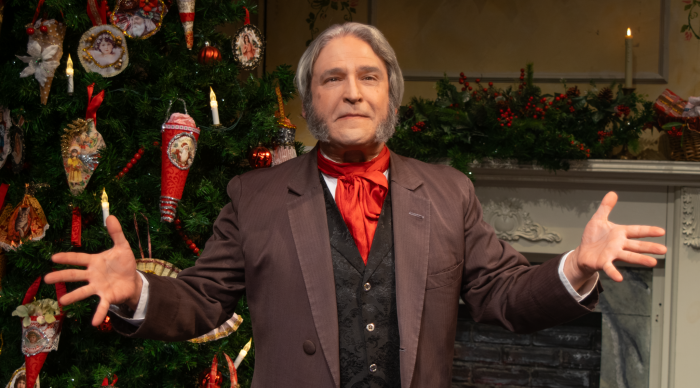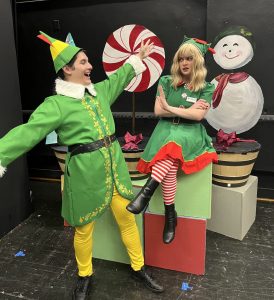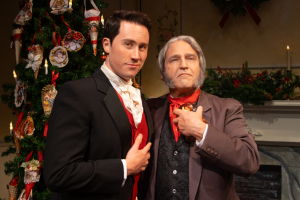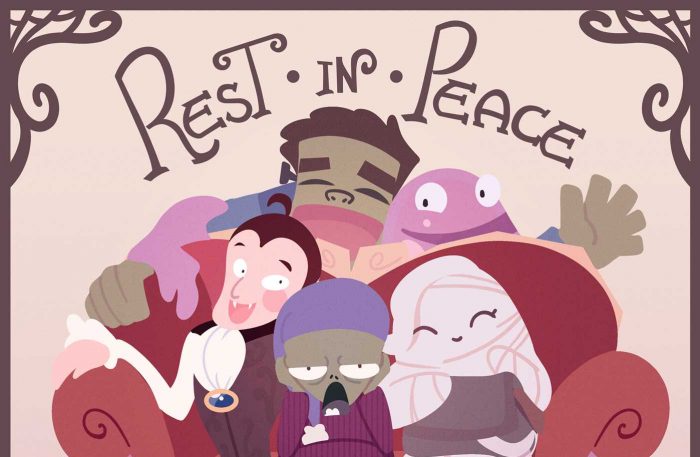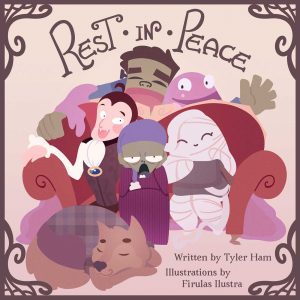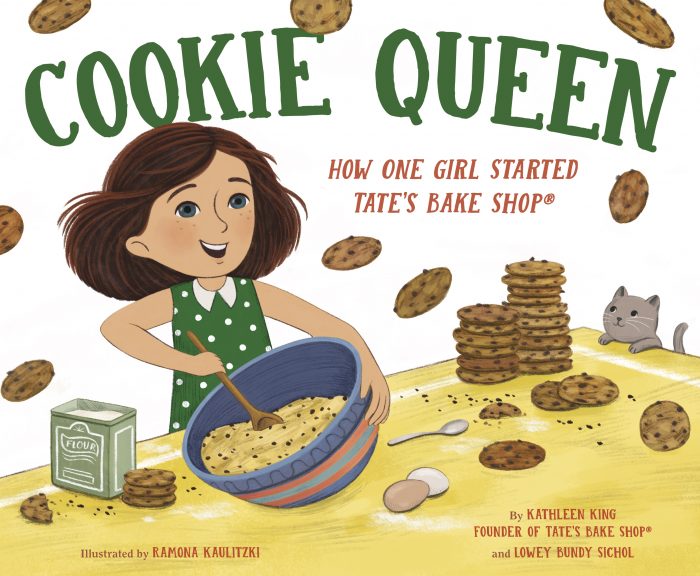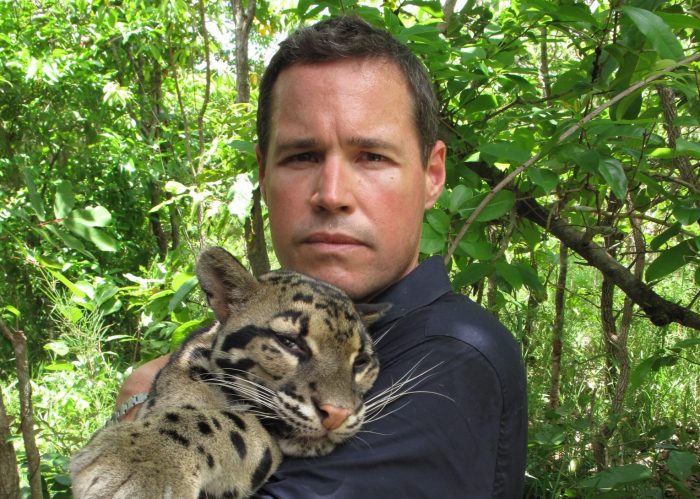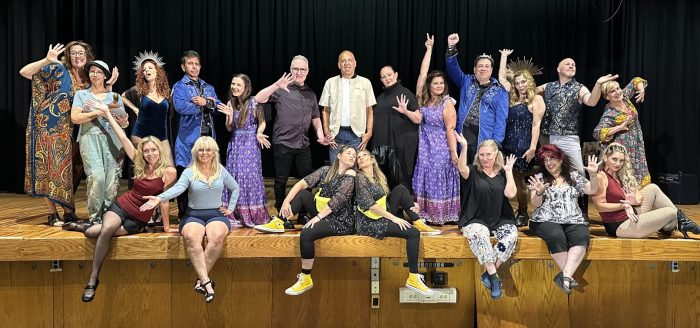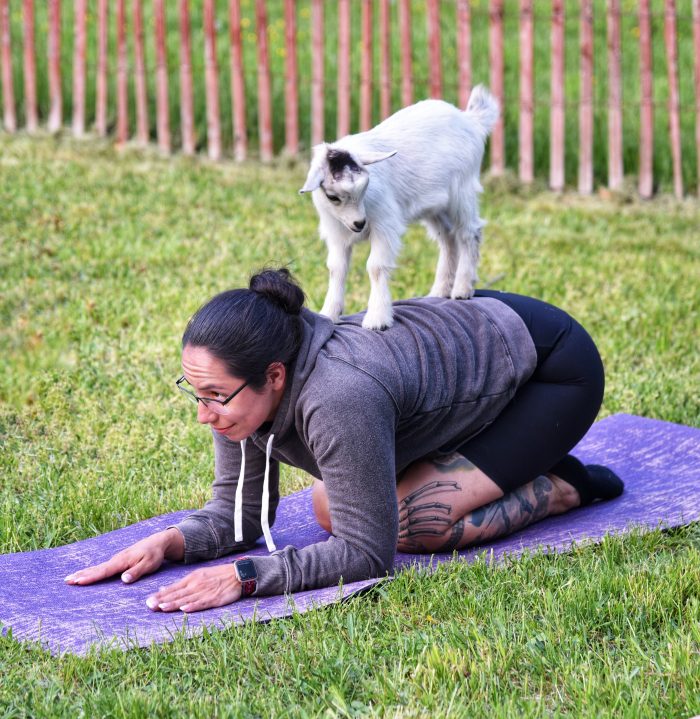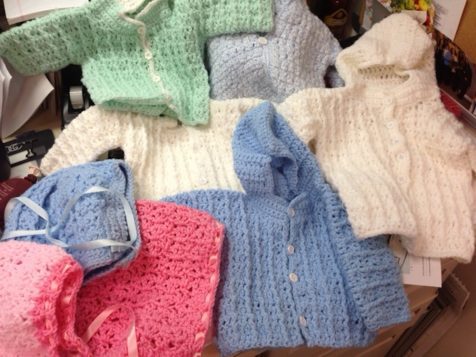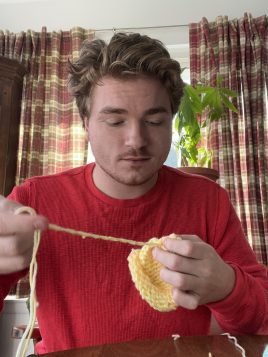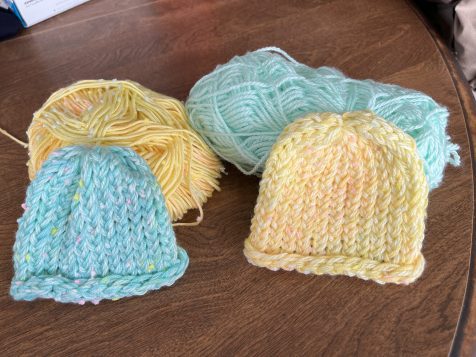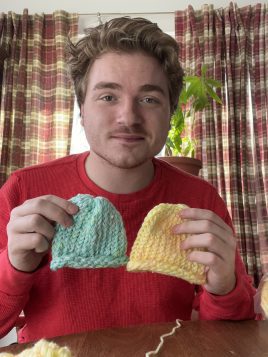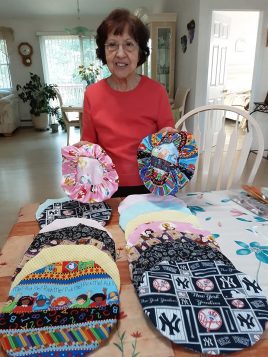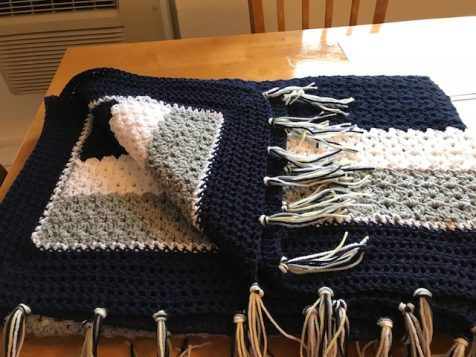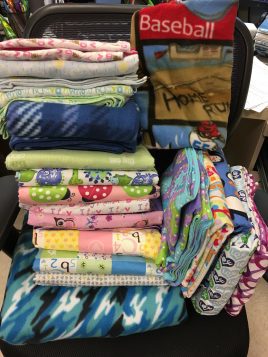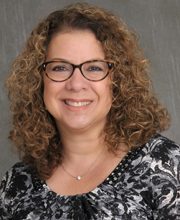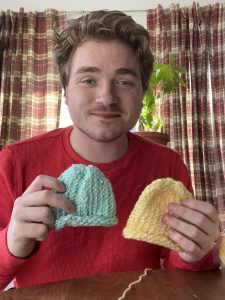By Melissa Arnold
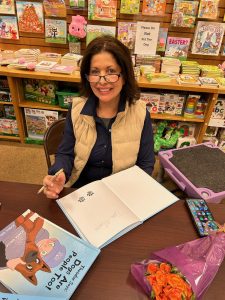
Maria Dello of Westbury has spent the past 20 years teaching others how to improve their lives through good nutrition. She also has a deep love for animals, and over time she began to consider how she might make a difference in their lives, too. As shelters filled again when the pandemic eased, Dello wanted to spread the message that dogs require a lifelong commitment of time, love and care. Her first book for children, Theodor Says: Dogs are People Too!, draws connections between human and animal needs through the adventures of her real-life pup, Theo. This book is an excellent introduction to animal care, especially for early readers.
Did you have pets growing up that made a big impact on you?
I grew up in Westbury, and our street was comprised entirely of our relatives. We all had dogs, and there were also chickens, some rabbits, a lamb, and a pony. I was always a nurturer — the one that would be out feeding a baby chick in the incubator with a little eyedropper of sugar water. I was the youngest of five children, and I always had a German Shepherd who would be my buddy, so my love for them began when I was young. I learned compassion from my grandmother and the other members of my family. They taught me that all of us need to be cared for, and that animals give us such love.
Tell me about Prince, the dog on the inside cover of your book.
Prince was my previous German Shepherd that I had for almost 13 years. I learned so much from Prince, especially his incredible intelligence and the skill he had for reading body language and understanding what was going on with the people around him. He was a constant source of comfort for my elderly parents, and we were amazed at the depth of his feelings. That was a real “a-ha” moment for me — that he felt many of the same emotions that humans do, and that there are great health benefits to sharing our lives with them. After his passing, I really wasn’t ready to get another dog, so I started working with rescue organizations and doing some schooling toward training dogs.
You ended up becoming a nutritionist. How did you become interested in animal nutrition?
I went to school for science at SUNY Farmingdale, and then went on to study nutrition at the American Health Science University. During that time, I became fascinated by all of the natural ways of treating various conditions. I was constantly learning and going to seminars, and had a lot of exposure to alternative medicine that made a big impact on me. I ended up working with a cardiologist and eventually opening my own nutrition practice. My focus was on human patients, but I always had an interest in doing what I could to support the nutrition of my animals as well.
I would take a variety of online courses about nutrition and dogs. During the pandemic, so many people were getting dogs to keep them company during the lockdown. My patients would occasionally ask me questions about their dogs, from nutrition questions to advice about behavior.
So when did you first start thinking about writing a children’s book?

As people went back to work [post-pandemic], so many dogs were struggling with their families no longer being home, or just not being given the same degree of care. But they still need walks, food, baths, medicine, companionship. You make a serious commitment when you bring a dog home, and they can’t just live in a crate or in a doggy daycare. Some people don’t understand that puppies like to chew on things, or they might pull on their leash during a walk. That’s not their fault — they need our help to learn manners.
As rescues and shelters began to fill, I felt the need to educate others about what dogs need. They have so many of the same needs and feelings that we do, which inspired the title of the book: Dogs are People, Too.
I’ve been writing a nutrition column for more than 15 years, so I have writing experience. I decided that a children’s book would be the best place to start because that’s where learning begins, when we’re young. Look at me — the compassion I developed for animals began when I was small and was exposed to those good habits.
Did you pursue traditional publishing or self-publish?
I started writing in 2022, and it took about two years to complete. I did a lot of work researching publishers, and I appreciated that this publisher, Fulton Books, was like a one-stop shop. They provided everything I needed, including an in-house illustrator.
Is there a target age in mind for this book?
It’s short and sweet, but when you show this book to a kid, they respond to the bright colors and the activities that Theodor is doing. It’s written in simple language, but it will be a great teaching tool for kids of any age, from 3 to 13.
Are there health benefits to having a dog?
First, it’s important to do your research before you get a dog, and choose the kind of dog that matches your lifestyle. Someone who isn’t very active wouldn’t do well with a German Shepherd. They need a calm lap dog that will keep them company.
Even the simple act of petting a dog has been shown to lower blood pressure, and there was a study done recently that showed people were 33% more likely to survive a heart attack if they had a dog at home. If you walk your dog for 30 minutes in the morning, then a few times later in the day, suddenly you’ve walked an hour together. You get fresh air, you bond with the dog, you meet people around you … it doesn’t just benefit them, but it also improves your health, physically and emotionally.
—————————————
Theodor Says: Dogs are People Too! is available now at your favorite online booksellers. Join author Maria Dello for a book reading and book signing at The Next Chapter, 204 New York Ave., Huntington on Tuesday, April 16 at 7 p.m. Keep up with Theodor at www.theosaysdogsarepeopletoo.com, and learn more about Maria Dello at www.dellonutritionals.com.

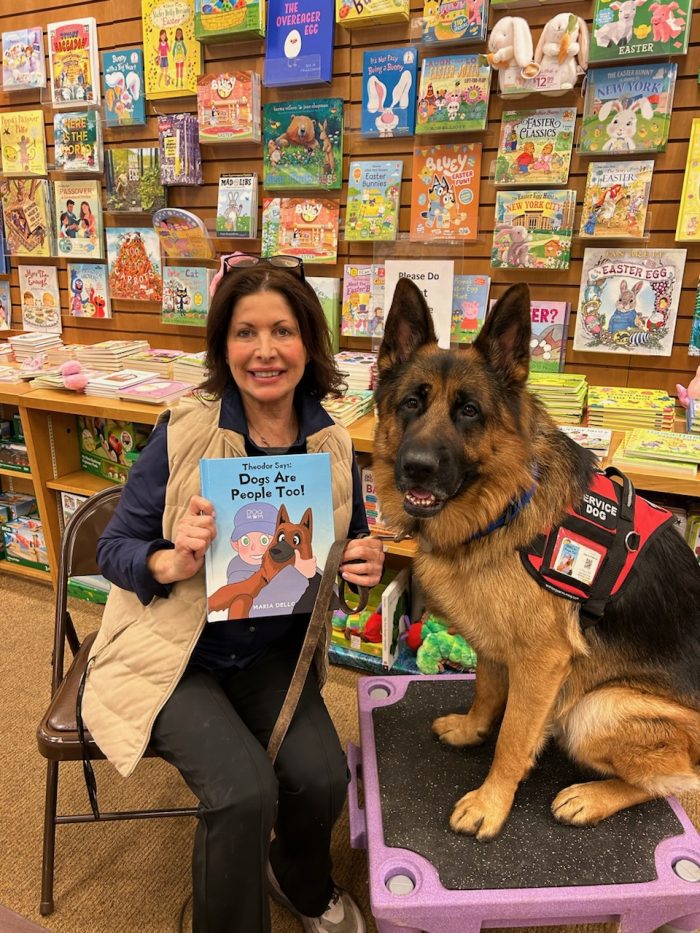
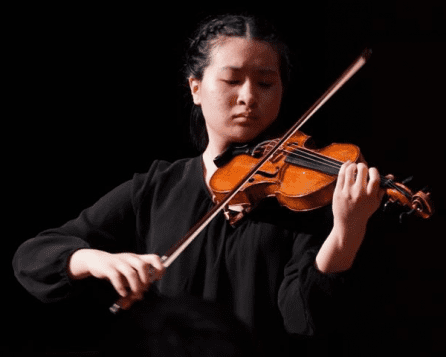

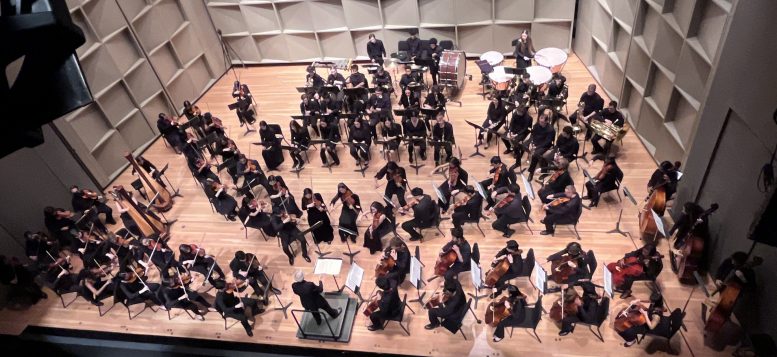

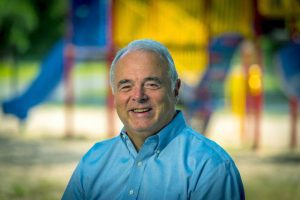
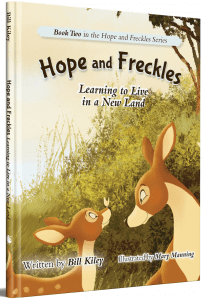 As in the previous Hope and Freckles installment, this story gives young readers a first glimpse into the difficult choices made by refugees and immigrants seeking a fresh start in the United States. The book gently and compassionately explains concepts like asylum-seeking, discrimination, cultural traditions and assimilation in an age-appropriate way.
As in the previous Hope and Freckles installment, this story gives young readers a first glimpse into the difficult choices made by refugees and immigrants seeking a fresh start in the United States. The book gently and compassionately explains concepts like asylum-seeking, discrimination, cultural traditions and assimilation in an age-appropriate way.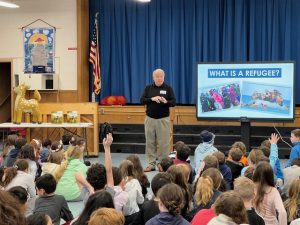 Following his retirement, political issues and humanitarian crises around the world led Kiley to do more research on refugees. The United Nations High Commissioner for Refugees (UNHCR) estimates there are currently 37 million refugees around the world.
Following his retirement, political issues and humanitarian crises around the world led Kiley to do more research on refugees. The United Nations High Commissioner for Refugees (UNHCR) estimates there are currently 37 million refugees around the world. Their teacher had the students do the exercise at home, then write a reflection about what items they packed and how they felt throughout the process.
Their teacher had the students do the exercise at home, then write a reflection about what items they packed and how they felt throughout the process.